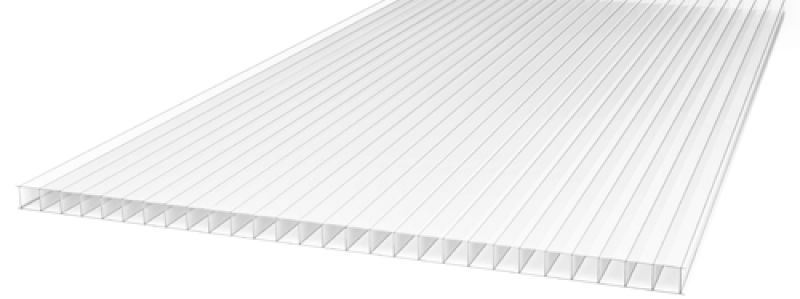
HOW TO CHOOSE POLYCARBONATE FOR GREENHOUSE COVER?
Share
Polycarbonate greenhouses have long been a symbol of year-round vegetable supply. Backyard owners and rural residents have realized that having a greenhouse is a requirement of the times, not a whim. Although many people still use traditional wooden structures with materials previously common for building greenhouses, such as glass and polyethylene, their advantage is undoubted. It was the case until recently. Thanks to the indisputable benefits, polycarbonate has gained tremendous popularity as a building material for lightweight structures.
Features:
Polycarbonate is an ideal material for greenhouse construction. Typically, for greenhouse covering using monolithic or cellular polycarbonate. Cellular polycarbonate has a honeycomb structure. The honeycomb is filled with air, which allows the material to retain heat and breathe. A special coating that acts as a filter allows soft and beneficial sunlight to pass through and filters out hard ultraviolet rays. Polycarbonate sheets can mostly be twinwall with a thickness of 4, 6, 8, 10 mm, and triple wall - 16 mm.
Benefits:

The features of this new material became the basis of its advantages. Due to their structure, polycarbonate greenhouses let in over eighty percent of the sunlight (while helpful, no ultraviolet radiation). The porous structure helps retain heat and provides enough oxygen necessary for artificial heating conditions.
A polycarbonate greenhouse can last up to twenty years with proper installation and use, which significantly exceeds other materials' service life. It is also resistant to external factors such as heat and cold and mechanical (physical) influences. Polycarbonate greenhouses come in many different shapes, depending on your preference. An essential advantage of such greenhouses is that you can install them (by) yourself. You don't have to contact an expert on this.
The fact that greenhouse polycarbonate sheets are mounted on a steel or vinyl profile is also an advantage; in such a frame, the structure will last longer.
Material selection:
How to choose the polycarbonate you need:
Choosing a high-quality polycarbonate isn't easy. Of course, it's preferable to buy greenhouse polycarbonate from suppliers who have proven their products' quality and can offer the best price. You need to pay attention to several nuances when you buy greenhouse polycarbonate.
- Pay attention to the surface of the sheet. There should be no noticeable damage, such as scratches or chips.
- Ribs of stiffness, which run in the middle of the sheet, are responsible for its strength. They must be located strictly at right angles. Any waviness and even minor deviations from this standard are signs of defect.
- The place and method of storing polycarbonate sheets also matter. If the sheets were curled or on edge, they shouldn't be bought. It's essential that the sheet, during storage, lay on a flat surface.
The popularity of polycarbonate in greenhouse construction is more than justified. If you dream of a greenhouse that will last for many years and be functional, then there is no better than a polycarbonate one.
